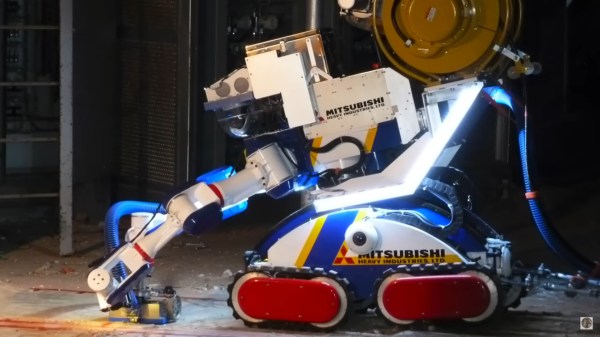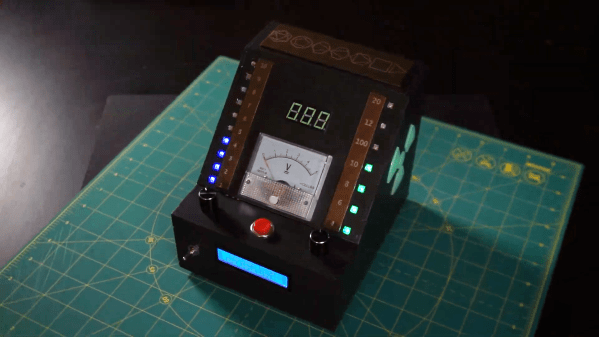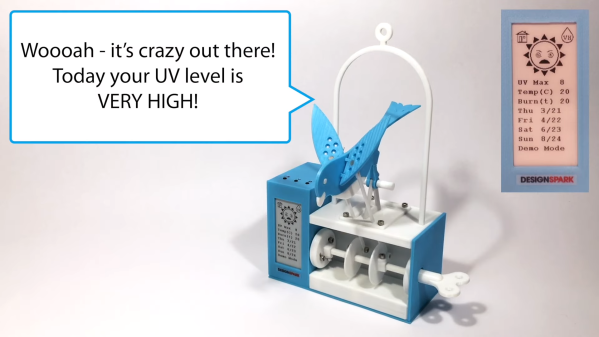“They paved paradise and put up a parking lot.” That might be stretching things a bit, especially when the “paradise” in question is in New Jersey, but there’s a move afoot to redevelop the site of the original “Big Bang Antenna” that has some people pretty upset. Known simply as “The Horn Antenna” since it was built by Bell Labs in 1959 atop a hill in Holmdel, New Jersey, the antenna was originally designed to study long-distance microwave communications. But in 1964, Bell Labs researchers Arno Penzias and Robert Wilson accidentally discovered the microwave remnants of the Big Bang, the cosmic background radiation, using the antenna, earning it a place in scientific history. So far, the only action taken by the township committee has been to authorize a study to look into whether the site should be redeveloped. But the fact that the site is one of the highest points in Monmouth County with sweeping views of Manhattan has some people wondering what’s really on tap for the site. A petition to save the antenna currently has about 3,400 signatures, so you might want to check that out — after all, you don’t know what you’ve got ’til it’s gone.
The Robots Of Fukushima: Going Where No Human Has Gone Before (And Lived)
The idea of sending robots into conditions that humans would not survive is a very old concept. Robots don’t heed oxygen, food, or any other myriad of human requirements. They can also be treated as disposable, and they can also be radiation hardened, and they can physically fit into small spaces. And if you just happen to be the owner of a nuclear power plant that’s had multiple meltdowns, you need robots. A lot of them. And [Asianometry] has provided an excellent synopsis of the Robots of Fukushima in the video below the break.
Starting with robots developed for the Three Mile Island incident and then Chernobyl, [Asianometry] goes into the technology and even the politics behind getting robots on the scene, and the crossover between robots destined for space and war, and those destined for cleaning up after a meltdown.
The video goes further into the challenges of putting a robot into a high radiation environment. Also interesting is the state of readiness, or rather the lack thereof, that prompted further domestic innovation.
Obviously, cleaning up a melted down reactor requires highly specialized robots. What’s more, robots that worked on one reactor didn’t work on others, creating the need for yet more custom built machines. The video discusses each, and even touches on future robots that will be needed to fully decommission the Fukushima facility.
For another look at some of the early robots put to work, check out the post “The Fukushima Robot Diaries” which we published over a decade ago.
Continue reading “The Robots Of Fukushima: Going Where No Human Has Gone Before (And Lived)”
Hackaday Podcast 192: Supercon Was Awesome, How To Grind ICs And Make Your Own Telescope
This week, Editor-in-Chief Elliot Williams and Managing Editor Tom Nardi are still flying high on their post-Supercon buzz (and are a bit jet lagged) this week. We’ll start with some of the highlights from our long-awaited Pasadena meetup, and talk a bit about the winner of this year’s Hackaday Prize. Talk will then shift over to shaved down NES chips, radioactive Dungeons and Dragons gameplay, an impressive 3D printed telescope being developed by the community, and the end of the Slingbox. Stick around for a double dose of Dan Maloney, as we go over his twin treatises on dosimetry and the search for extraterrestrial life.
Download it, burn it on a floppy, and you’ll have it forever!
Check out the links below if you want to follow along, and as always, tell us what you think about this episode in the comments!
Roll The Radioactive Dice For Truly Random D&D Play
When you have a bunch of people gathered around a table for a “Dungeons & Dragons” session, you have to expect that things are not always going to go smoothly. After all, people who willingly create and immerse themselves in an alternate reality where one bad roll of the dice can lead to the virtual death of a character they’ve spent months or years with can be traumatic. And with that trauma comes the search for the guilty — it’s the dice! It’s always the dice!
Eliminating that excuse, or at least making it statistically implausible, is the idea behind this radioactively random dice roller. It comes to us from [Science Shack] and uses radioactive decay to generate truly random numbers, as opposed to the pseudorandom number generators baked into most microcontrollers. The design is based on [AlphaPhoenix]’s muon-powered RNG, but with a significant twist: rather than depending on background radiation, [Science Shack] brought the power of uranium to the party.
They obtained a sample of autunite, a weird-looking phosphate mineral that contains a decent amount of uranium, perfect for stimulating the Geiger counter built into the dice roller. Autunite also has the advantage of looking very cool under UV light, taking on a ghostly “fuel rod glow,” in the [Homer Simpson] sense. The decay-powered RNG at the heart of this build is used to simulate throws of every standard D&D die, from a D4 to a D100. The laser-cut hardboard case holds all the controls and displays, and also has some strategically placed openings to gaze upon its glowing guts.
We really like the design, but we have to quibble with the handling of the uranium ore; true, the specific activity of autunite is probably pretty low, but it seems like at least some gloves would have been in order.
Continue reading “Roll The Radioactive Dice For Truly Random D&D Play”
2022 Hackaday Supercon: Final Talks Announced
The third and final round of the 2022 Supercon talks announcements brings us closer to a complete picture of the full spectrum of hacking awesomeness taking the stage in just a few weeks. (And we haven’t even announced the keynote yet!)
Supercon is the Ultimate Hardware Conference and you need to be there! We’ll continue to announce speakers and workshops over the next couple weeks. Supercon will sell out so get your tickets now before it’s too late. And stay tuned for the next round of talk reveals next week! Continue reading “2022 Hackaday Supercon: Final Talks Announced”
UV Monitoring Budgie Keeps An Eye On Exposure Levels
UV rays are great at helping us generate vitamin D, but they can also be harmful, causing sunburn and even melanoma. To help kids keep track of the UV index in his local area, [Jude Pullen] created the UV Budgie.
The build is based around an Arduino Nano 33 IoT board, which queries the Met Office’s API to determine the UV level in the area. The relevant data is then displayed on a small e-ink display, with cute little sun characters telling you about the prevailing conditions. It also announces the current risk level with recorded voice samples, advising on whether precautions should be taken, such as using sunscreen or sheltering inside for the worst days. Plus, there’s a bird that flaps its wings to announce an update, actuated by a small servo in the base.
It’s a fun build that should help [Jude] and his family remain sun safe in the summer. [Jude] notes the build could also be reprogrammed to share other warnings, too. APIs to query local air quality or radiation levels are just some of the ideas that come to mind. Video after the break.
Continue reading “UV Monitoring Budgie Keeps An Eye On Exposure Levels”
Hackaday Podcast 187: The Sound Of Gleeful Gerbils, The Song Of The Hard Drive, And A Lipstick Pickup Lullaby
This week, Editor-in-Chief Elliot Williams and Assignments Editor Kristina Panos gushed about NASA’s live obliteration of minor planet Dimorphos using a probe outfitted with a camera. Spoiler alert: the probe reaches its rock-dappled rocky target just fine, and the final transmitted image has a decidedly human tinge.
Kristina brought the mystery sound again this week, much to Elliot’s sonic delight. Did he get it? Did he figure it out? Well, no. The important thing is one of you is bound to get it.
We kick off the hacks with a really neat 3D printed linkage that acts as an elevator for a marble run, and then we discuss a mid-century hack that helps you decide whether it’s time to emerge from the fallout shelter using the contents of your typical 1950s pockets. We spent a few minutes comparing our recent radiation exposure levels — Kristina wins with about a dozen x-rays so far this year, but no full-body CT scans. Then we talk guitars for a bit, remember a forgotten CPU from TI, and spend a few cycles talking about a tone-wheel organ that sounds like a chorus of gleeful gerbils.
Finally, we talk toner transfer for 3D prints, argue in defense of small teams versus large committees, and get all tangled up in cursive.
Check out the links below if you want to follow along, and as always, tell us what you think about this episode in the comments!

















